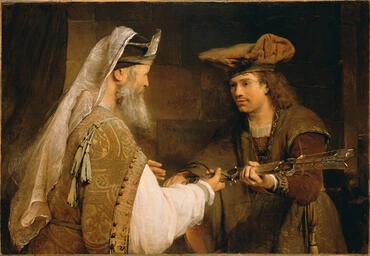Give

Like other common verbs, the meaning of "give" in the Bible is affected by context: who is giving what to whom? In general, though, giving relates to the fact that the Lord provides us all with true teachings for our minds and desires for good in our hearts, and for the fact that we need to accept those gifts while acknowledging that they come from the Lord, and not from ourselves. One of the most common and significant uses of "give" in the Bible is the repeated statement that the Lord had given the land of Canaan to the people of Israel. This springs from the fact that Canaan represents heaven, and illustrates that the Lord created us all for heaven and will give us heaven if we will accept the gift.
Arcana Coelestia #4277
4277. 'And he touched the hollow of his thigh' means where celestial-spiritual good is joined to natural good meant by 'Jacob'. This is clear from the meaning of 'the thigh' as conjugial love, and consequently as all celestial and spiritual love, since these are derived from conjugial love as offspring from their parent, dealt with in 3021; and from the meaning of 'the hollow' or socket or cavity of it - that is to say, of the thigh - as the place where the joining together exists, and here therefore where celestial-spiritual good is joined to natural good meant by 'Jacob'. But no one can be told anything about that conjunction unless he knows first of all what celestial-spiritual good, meant by 'Israel', is, and what natural good, meant by 'Jacob', is. It will be told below at verse 28 where Jacob, who at that point is named Israel, is the subject and also further on where Jacob's descendants are the subject.






